Negotiating Advertising Contracts That Protect Spend
At their best, advertising contracts are not protection; they are about partnership.
They are blueprints for cooperation, explaining how advertisers, agencies, and publishers cooperate toward shared success.
Unfortunately, that's not the way most organizations handle them.
Too often, contracts are taken from old templates, signed in a rush, and stuck away until something goes wrong.
The result? Misunderstandings, disagreements, and relationships that fall apart under unnecessary tension.
Understanding Advertising Contracts
 Whether you’re working with agencies, negotiating media buying contracts, or drafting marketing contracts for influencers, your agreements should link payment to performance, clarify ownership of creative assets, and provide remedies when goals aren’t met.
Whether you’re working with agencies, negotiating media buying contracts, or drafting marketing contracts for influencers, your agreements should link payment to performance, clarify ownership of creative assets, and provide remedies when goals aren’t met.
In this blog, we’ll break down the clauses and negotiation strategies that ensure your contracts protect spend, drive ROI, and turn advertising agreements into performance frameworks rather than legal checkboxes.
Key Takeaways
- Advertising agreements establish clarity and accountability; they establish deliverables, payment terms, schedules, and expectations of performance.
- Poor contract writing generates threats like fighting over campaign outcomes, misused creative resources, and billing disputes.
- Some of the pitfalls are imprecise performance metrics, unclear intellectual property rights, and imprecise termination terms.
- Technology can revolutionize contract management by streamlining reviews, indicating compliance holes, and assisting stakeholders in synchronizing on quantifiable results.
- Contemporary platforms such as Dock 365 streamline the process, with centralized visibility, real-time tracking, and collaborative tools that eliminate misunderstandings.
Negotiation Begins Before the Table
A misguided or rushed agreement not only sacrifices performance but puts both sides on a collision course. That is why preparation is not a choice but a necessity.
For the Advertiser: Set Your Outcome Before You Negotiate
Understand what you require beyond ad placement.
Brand lift, lead generation, or engagement?
What are your budgets, timelines, and red lines? Approach negotiation with your non-negotiables and a defined view of success.
That way, each clause, from deliverables to performance triggers, works towards your goals and not lost in legalese.
For the Agency or Publisher: Show Value, Find Flexibility
Outline concrete deliverables, suggested performance criteria, and your pricing rationale: retainer, performance-based, or hybrid.
While doing this, be aware of what is most important to your partner: creative control, access to data, flexibility of timeline, and where you can give in without compromising the bottom line.
Smart Negotiation Starts with Data
 Organizations with strong negotiation processes, backed by advanced contract management tools, are significantly better at identifying risks and avoiding disputes.
Organizations with strong negotiation processes, backed by advanced contract management tools, are significantly better at identifying risks and avoiding disputes.
When every term is deliberate, from intellectual property ownership to termination triggers, you’re no longer selling outputs; you’re co-creating success.
Elevate the Proposal into Pre-Agreement Alignment
Imagine your proposal as the initial draft of a partnership.
Don't wait for legal to arrive; get all stakeholders aligned early on.
Get scope, price, IP ownership, and performance metrics sorted out before the template hits the table.
That upfront alignment oils the negotiations, speeds up sign-off, and eliminates friction post-launch.
The Contract as Your Roadmap
Approached mindfully, advertising agreements are less about safeguarding and more about collaboration.
They're playbooks for implementation, sketched out prior to the initial creative asset's release or the initial rupee's expenditure.
By planning with definition, using alignment tools, and aligning incentives up front, you construct agreements that don't merely deliver campaigns; they fuel predictable, sustainable success.
Key Terms That Protect Spend and Drive ROI
Advertising contracts are most effective when they move beyond boilerplate legal language and instead take the form of clear blueprints for cooperation.
Every clause is important, influencing not just the monetary results but also the relationship at work between advertiser and agency.
The following are the key provisions to review carefully, and how to do it to achieve maximum transparency and equity. -Photoroom.webp?width=300&height=300&name=Key%20Terms%20(1)-Photoroom.webp)
-
Scope of Work
The core of any contract is the Scope of Work (SOW).
This is where both parties agree on what precisely will be delivered.
In advertising, ambiguous terms such as "campaign management" or "content creation" leave too much room for debate.
A good SOW details deliverables such as quantity of creatives, media platforms, ad forms, and review cycles and timelines.
-
Performance Metrics
Advertising is measured by outcome, but contracts fail too often to be concrete in their language and merely use general descriptions such as "boost brand awareness."
A better method is to attach responsibilities to quantifiable KPIs such as click-through rates, impressions, conversions, or ROI percentages.
Performance clauses need to not just outline success, but also how it will be measured, by whom, and with which tools. This makes empty promises into quantifiable obligations.
-
Payment Structures
One-sided arrangements, either paying in full up front or solely on performance, create imbalance.
Contemporary agreements increasingly use hybrid versions: a minimum retainer to lock up agency resources along with outcome-linked performance-based incentives.
It provides stability to agencies while leaving advertisers assured that payments are tied to performance.
-
Intellectual Property Rights
Advertisers tend to think that they own everything as soon as the payment is received, but agencies might keep rights on templates, processes, or incomplete drafts.
Contracts must clearly differentiate that final work belongs to the advertiser, but proprietary processes and tools belong to the agency.
-
Data and Reporting
But many advertisers will find it hard to get raw performance data if agencies have reporting control.
Contracts must ensure real-time access to campaign dashboards and data-sharing procedures.
Transparency not just cultivates trust but enables faster, data-based decisions.
-
Termination Clauses
The termination clauses must specify notice periods, monetary settlements, and rights to completed work.
The intention is not to induce departures but to ensure that if the relationship breaks down, it does so in a way that is uninterrupted and does not involve unnecessary disputes.
-
Confidentiality and Compliance
A specific confidentiality provision helps secure this information.
Just as vital are compliance provisions for data privacy legislation, consumer protection regulations, and platform-specific marketing norms.
Deciding clear obligations avoids regulation violations that may prove costly to both parties.
-
Dispute Resolution
Agreements should incline towards progressive procedures: initial informal negotiation followed by mediation, and arbitration or litigation at the very end.
This keeps differences narrow and stops premature escalation.
Effective advertising contracts not only avoid issues, they improve campaigns.
By establishing deliverables, tying payments to performance, defining ownership, and promoting transparency, contracts lay the groundwork for trust and responsibility.
Making Negotiation a Partnership in Advertising Contracts
 In marketing, the "hard" clauses, such as scope of work, performance standards, intellectual property, and termination, are best settled with "soft" skills.
In marketing, the "hard" clauses, such as scope of work, performance standards, intellectual property, and termination, are best settled with "soft" skills.
Negotiation is not about dominating the other party; it's about creating alignment, and so the contract turns into a blueprint for success instead of a battlefield.
Know the Power Dynamics
Agencies, publishers, and advertisers seldom enter the negotiating table with equal bargaining power.
A multinational media group can afford to make tougher demands than an independent agency.
But even when one party seems to have the upper hand, posing intelligent questions and couching requests in terms of mutual advantage can trigger concessions.
Put Everything in Writing
Good relationships often begin with trust, but trust alone doesn’t protect budgets.
Oral agreements, handshake deals, and “we’ll work it out later” arrangements leave too much room for interpretation.
Every adjustment, whether about delivery timelines, creative approval processes, or billing milestones, should be captured in the contract and signed by authorized representatives.
Choose Smarter Dispute Mechanisms
Disputes are inevitable, but the way they are resolved can make or break long-term partnerships.
Instead of defaulting to litigation, contracts should encourage progressive resolution: negotiation first, then mediation, and only arbitration or court as a last resort.
Lead with Collaboration, Not Competition
The most effective negotiations are not about scoring points; they're about building a system that benefits both parties.
Rather than just talking about risk, highlight opportunity: how common purpose, equitable payment structures, and open reporting make the partnership stronger.
Shifting Advertising Contracts to New Challenges
Advertising agreements are changing as marketing platforms, tech, and laws evolve.
Proactive arrangements are foreseen changes that protect all parties while enabling innovation.
AI-Generated Content: Agreements need to define copyright and responsibility for AI-generated copy, images, and campaign materials.
Who owns the copyright? Who is liable for errors, bias, or copyright violations?
Establishing these factors at the outset prevents future controversy.
Influencer Marketing: As increasing dependence on influencers, contracts must clearly address FTC disclosure rules, brand safety guidelines, and ownership of IP rights for content generated by influencers.
Generic language isn't sufficient; it has to be specific.
Data Privacy After Cookie: With the changing regulations on tracking, contracts need to detail data collection, anonymization, and consent rules.
Parties should have an agreement regarding duties for GDPR, CCPA, and new laws to mitigate fines and reputational damage.
Brand Safety and Ethical Standards: In addition to banning illegal or objectionable content, contracts must establish a brand's ethical standards, social responsibility requirements, and procedures for rejecting unsuitable material.
Through actively responding to these new considerations, advertisers and agencies can build robust agreements that protect investments, foster innovation, and keep campaigns compliant and ethically healthy.
Advertising Contracts in Action
 A properly negotiated contract translates hopes into quantifiable results, mitigates risk, and establishes the tone for collaboration among advertisers, agencies, and publishers.
A properly negotiated contract translates hopes into quantifiable results, mitigates risk, and establishes the tone for collaboration among advertisers, agencies, and publishers.
Crafted strategically, these contracts become living agreements that steer campaigns, align incentives, and encourage accountability.
Digital contract management software, like Dock 365, makes this easier by making agreements central, monitoring commitments in real time, and enforcing compliance on complex campaigns.
Finally, your contract is not only a defense, but a roadmap to partnership.
With careful negotiation, plain-language clauses, and wise technology, advertisers and agencies can develop every campaign with confidence.
Learn about Dock 365 today and get a free demo to discover how intelligent contract management can transform your advertising deals into performance-based, two-way partnerships.
Like our content? Subscribe to our newsletter on LinkedIn for more insights and updates.
Book a Live demo
Schedule a live demo of Dock 365's Contract Management Software instantly.

Written by Jithin Prem


